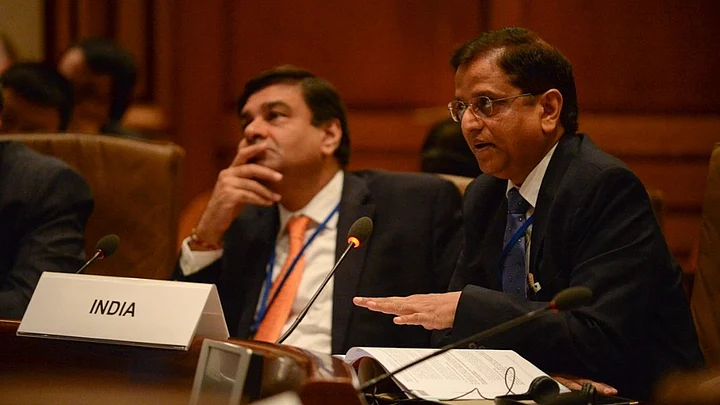India is poised to remain the fastest growing large economy in the world, and its GDP is expected to reach USD 5 trillion by 2025 as the economic reforms adopted in the last few years have started to bear fruit, a top Indian official has told the World Bank.
Giving an overview of the South Asian countries – Bhutan, Nepal, Bangladesh and Sri Lanka – Economic Affairs Secretary Subhash Chandra Garg said India continued to be a beacon of growth in the region.
"India is poised to remain as the fastest growing large economy in the world. In 2018, we expect India to grow at over 7.4 percent," Garg told the 97th meeting of the Development Committee of the World Bank on Sunday.
Transformational reforms such as Goods and Services Tax (GST) and initiatives such as Insolvency and Bankruptcy code, recapitalisation of banks, and unclogging of infrastructure investments will support such elevated growth, he told the World Bank.
"In the last few years, India has undertaken massive structural reforms toward formalisation of the economy and fostering digital financial inclusion," he said, adding that the country had grown at an average of 7.2 percent per annum in the last four years, and was continuing on the trajectory of sustained growth.
India’s GDP is expected to reach a volume of USD 5 trillion by FY2025 by leveraging on digitisation, globalisation, favourable demographics and structural reforms.Subhash Chandra Garg, Economic Affairs Secretary
In the absence of Union Finance Minister Arun Jaitley, Garg is leading the Indian delegation for the annual Spring Meeting of the International Monetary Fund and the World Bank.
India, he said, has accorded top priority to address its infrastructure deficit to sustain economic growth. Steps have been taken to mobilise funds from various sources for development of infrastructure which includes, inter alia, launching of innovative financial vehicles, he added.
India has begun undertaking a major programme of monetising brown field assets of Central Public Sector Undertakings (CPSUs) as a separate asset class for infrastructure investments, Garg said.
"In the field of digitisation, India has completed the ambitious task of connecting ,100,000 gram panchayats through high speed optical fibre network under phase-I of the Bharat Net project," he said, adding that it has enabled broadband access to over 200 million Indians living in about 250,000 villages.
The government also proposes to setup 5,00,000 wi-fi hotspots, which will provide broadband access to 50 million rural citizens.
Around 470 Agricultural Produce Market Committees (APMCs) have been connected to the electronic National Agriculture Market (e-NAM) network providing a unified national market for agricultural commodities, he added.
Garg told the World Bank that one of the key features of India’s economic performance in recent years has been the speed and scale of implementation of reforms.
"Recent upgrade of the sovereign rating reflects India's strength, speed and scale of these ongoing reforms," he said.
Noting that India rolled out the GST in July 2017, Garg said within a short span of eight months, monthly earnings from GST have crossed USD 12.7 billion. The number of dealers registered in the GST database increased by about four million in the fiscal year of the roll-out, which is about 60 percent higher than unique assesses registered earlier in the VAT network in the country.
India's massive leap in the Ease of Doing Business rankings from 142 in 2014 to 100 in 2017 is testimony to India's commitment to long-term reforms for an open and vibrant economy. This is also reflected in strong FDI inflows which have grown from USD 34.3 billion in 2012-13 to USD 60.1 billion in 2016-17, he added.
In the arena of financial inclusion, the Jan-Dhan Yojana, launched in August 2014, has rapidly expanded banking services for the hitherto deprived sections, he said.
Till date, over 313 million bank accounts have been opened and savings of about USD 11.510 billion has been mobilised under the scheme.
For providing access to financial facilities by small businesses, India rolled out the Mudra Yojana in April 2015 and had supported over 115 million small businesses by sanctioning loans of USD 77.66 billion so far, he claimed.
Noting that India is pursuing a path of clean and climate responsible growth, Garg said the country aimed to achieve about 40 percent cumulative installed power capacity from non-fossil fuel based energy resources by 2030 with the help of transfer of technology and low cost international finance.
